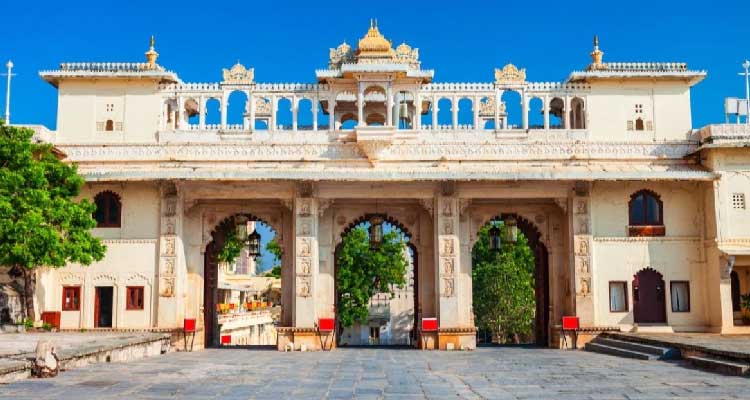
Rajasthan, the land of kings, is a treasure trove of architectural wonders that stand as a testament to its rich history and cultural heritage. Amidst the majestic forts and opulent palaces, one can discern a significant influence of the Mughal dynasty. The Mughals, known for their architectural grandeur, left an indelible mark on the architectural landscape of Rajasthan. In this blog, we will delve into the architectural marvels of Rajasthan and explore the profound Mughal influence on the state's heritage.
Agra Fort: A Glimpse of Mughal Magnificence
Located in the heart of Agra, the Agra Fort is an architectural masterpiece that served as the main residence of the Mughal emperors till 1638. Its red sandstone walls and intricate marble work bear the unmistakable Mughal design, and this influence can be seen echoed in several structures across Rajasthan.
Amber Fort: Fusion of Rajput and Mughal Styles
Perched majestically on a hill in Jaipur, the Amber Fort is a stunning blend of Rajput and Mughal architectural styles. The intricate mirror work, marble inlays, and expansive courtyards reflect the Mughal influence, particularly from Emperor Akbar's era.
City Palace, Jaipur: Regal Mughal Opulence
The City Palace in Jaipur, the residence of the royal family of Jaipur, exhibits a seamless fusion of Mughal and Rajput architectural elements. The four gates of the palace each represent a different season, and the Mughal gardens and courtyards are reminiscent of the gardens of the Mughal Empire.
Jal Mahal: The Water Palace
Set amidst Man Sagar Lake in Jaipur, the Jal Mahal is a visual delight that showcases the brilliance of Mughal architecture. While only one floor is visible above water, the palace has four additional submerged levels, exhibiting the architectural prowess of the Mughal craftsmen.
Keywords: Jal Mahal, Mughal water architecture, submerged levels
Hawa Mahal: The Palace of Winds
The Hawa Mahal, also known as the Palace of Winds, is an iconic structure in Jaipur. Its unique five-story façade with intricately designed jharokhas (windows) allowed the royal women to observe street festivities without being seen. This architectural marvel reflects the Mughal love for aesthetics and innovation.
Fatehpur Sikri: The Abandoned Mughal City
Though not in Rajasthan, Fatehpur Sikri, located near Agra, is worth mentioning for its profound influence on Rajasthan's architecture. Built by Emperor Akbar, this red sandstone city served as the Mughal capital for a short period. Its amalgamation of Mughal and Persian architectural styles is echoed in many structures across Rajasthan.
Rajputana Splendor: Udaipur's City Palace
The City Palace of Udaipur, though predominantly Rajput in design, bears traces of Mughal influence. The fusion of marble, granite, and intricate mirror work reflects the grandeur reminiscent of Mughal architecture.
Chittorgarh Fort: A Testament to Rajput Valor with Mughal Influence
The largest fort in India, Chittorgarh, showcases the valor of the Rajputs along with the architectural influence of the Mughals. The fort's grandeur, coupled with its strategic design, is reminiscent of Mughal military architecture.
Junagarh Fort, Bikaner: An Ode to Mughal Engineering
Built by Raja Rai Singh, a general in the army of Emperor Akbar, Junagarh Fort in Bikaner exemplifies Mughal architectural and engineering techniques. The intricate stone carvings and marble work echo the finesse of Mughal craftsmanship.
Ranthambore Fort: A Blend of Strength and Aesthetics
The Ranthambore Fort, a UNESCO World Heritage Site, exemplifies the harmonious blend of military architecture with aesthetic elements. The Mughal-influenced architectural features are evident in the fort's strategic layout and design.
In conclusion, Rajasthan's architectural marvels stand as a testament to the fusion of cultures and dynasties. The Mughal influence, with its emphasis on grandeur, aesthetics, and engineering, has left an indelible mark on the architectural landscape of this royal state. As you explore the forts and palaces of Rajasthan, you'll find yourself immersed in a captivating journey through time, marveling at the seamless integration of Rajput and Mughal architectural styles.